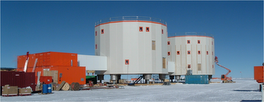Using seismic waves to image Earth's internal structure
Life on board the Marion Dufresne continues uneventfully. I am taking advantage of the relatively clement sea conditions to work on a manuscript due for submission soon, and to read some scientific literature.
Earth science is a frustrating subject at times. It seems the more we investigate the Earth, the less we understand how it works. Controversy is rife, generating much confusion in the minds of students and researchers alike. Questions like 'How do subduction zones work?' and 'Where does hotspot volcanism originate?' are still hotly debated at international conferences and in print. One of the ways we are trying to address these open questions is by striving for clearer and higher resolution images of the Earth's interior.
Romanowicz (2008) gives a good three-page summary of past progress and outstanding issues in the use of seismic waves for this type of imaging.
To address these controversies, seismology has been brought to bear to image Earth's deep interior. From the construction of accurate models of Earth's one-dimensional radial structure to the current models of its three-dimensional structure, progress in seismic imaging has gone hand in hand with improvements in the design of seismic sensors, the capacity to record digitally increasingly massive quantities of data, theoretical progress in handling seismic-wave propagation through complex three-dimensional media and the development of powerful computers for simulating seismic waves and for the inversion of large matrices.We are now at a point where there is a certain consensus regarding the long wavelength heterogeneities within the Earth. The next steps according to Romanowicz should be
characterizing the sharpness or fuzziness of the boundaries of the heterogeneous structures deep inside the planet, and detecting and mapping small-scale heterogeneity [...] This will mean extracting more information from seismograms than has traditionally been done.Romanowicz goes on to describe some of the recent advances that are already leading to improvements in tomographic imaging techniques, including first order scattering theory, spectral element wavefield simulation methods and the extraction of structural information from the cross-correlation of noise records.
The problem of data coverage still remains:
A significant challenge is the limited distribution of seismic-wave sources and receivers. Ideally, one would want to sample the volume of Earth uniformly. But unlike other disciplines that use imaging, such as medical tomography or petroleum exploration, earthquake seismologists cannot optimize their experimental geometry.
Here we return the main theme of the last few research blogging posts: the need to obtain more raw data and to exploit them more fully to improve the imaging of Earth's interior.
Quoted text reprinted by permission from Macmillan Publishers Ltd: Nature, copyright (2008).
References
Romanowicz, B. (2008). Using seismic waves to image Earth's internal structure. Nature, 451(7176), 266-268. DOI: 10.1038/nature06583




1 comment:
The dude is completely just, and there is no suspicion.
Post a Comment